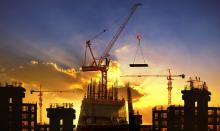
Growth opportunities in the global construction additives sector will be promising over the next six years, a new survey has found.
A global uptick in construction activities, stringent building codes and environmental standards, and increasing usage of concrete admixtures are key factors driving the global construction additives market revenues towards US$16.97bn by 2025, according to research firm Frost & Sullivan. This is also creating high demand for products such as superplasticisers and iron-oxide pigments. Frost & Sullivan predicts that the market will expand at a robust CAGR (compound annual growth rate) of 6.6% from 2018–2025.
“With a constantly evolving regulatory landscape, manufacturers should look towards adopting more environmentally sustainable and regulatory-compliant additive solutions and manufacturing processes,” said Prathmesh Limaye, Frost & Sullivan senior analyst, chemicals & materials in infrastructure & mobility. “This will enable participants to attract customers that are focused on high durability and environmental sustainability as well as harness lucrative revenues in the more mature markets of Western Europe and North America.”
In regional terms, Asia-Pacific is expected to be the biggest market for construction additives and the fastest growing sector due to industrialisation, urbanisation, and high economic growth. These factors are also expected to boost growth in Latin America. Europe will witness robust demand for construction additives due to new construction activities within Eastern Europe and remodelled construction in Western Europe. Frost says that the Summer Olympics in Paris in 2024 are expected to expand France’s infrastructure prospects.
“North America will witness the slowest growth among the regions, as the construction activity is still affected by the 2008 recession; however, it is slowly picking up,” Limaye said. “The Middle East is anticipated to witness strong growth with the Dubai World Expo in 2020 and Qatar FIFA World Cup in 2022 acting as key enablers.”
Limaye recommends that participants look towards the development and supply of products that can be manufactured with locally sourced raw materials to enable the supply of price-competitive products. This will avoid dependency on traditional manufacturing practices, which have the potential to be restricted in the future by regulatory authorities. They should also aim to strengthen relationships with major applicators and distribution networks by offering training and collaborative product development.
He adds that additional growth opportunities participants should aim to secure include improving their portfolios with products that can be customised to end-user specifications, such as application and ease of installation; expanding operations with high-growth prospects to Asia-Pacific due to the region’s growing infrastructure and construction development; and offering products that are comparative with those offered by regional and local manufacturers in developing countries.









